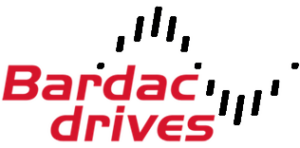Basic VFD Retrofit Considerations.
Environment
The environment in which the motor and power conversion equipment operates is of prime concern. Conditions such as ambient temperature, cooling air supply and the presence of gas, moisture and dust should all be considered when choosing a drive, its enclosures and protective features.
Speed Range
The minimum and maximum motor speeds for the application will determine the drive’s base speed. avoid running a standard induction motor at low speed for an extended period, as this can cause the motor temperature to exceed its rating due to limited airflow produced by the motor's fan.
Speed Regulation
The allowable amount of speed variation should be considered. Does the application require unvarying speed at all torque values, or will variations be tolerated?
Torque Requirements
The starting, peak and running torques should be considered when selecting a drive. Starting torque requirements can vary from a small percentage of the full load to a value several times full load torque. The peak torque varies because of a change in load conditions or mechanical nature of the machine. The motor torque available to the driven machine must be more than that required by the machine from start to full speed. Don't size the drive according to horsepower ratings. Instead, size the drive to the motor at its maximum current requirements at peak torque demand. The drive must satisfy the maximum demands placed on the motor.
Acceleration and Deceleration
The necessary acceleration time should be considered. Acceleration time is directly proportional to the total inertia and inversely proportional to the torque available.
With moderate inertia loads, overvoltage during deceleration typically won't occur. For applications with high-inertia loads, the VFD automatically extends deceleration time. However, if a heavy load must be quickly decelerated, a dynamic braking resistor should be used.
Motors act as generators when they decelerate, and dynamic braking allows the VFD to produce additional braking or stopping torque. VFDs can typically produce between 15 and 20% braking torque without external components. When necessary, adding an external braking resistor increases the VFD's braking control torque to quicken the deceleration of large inertia loads and frequent start-stop cycles.
Duty Cycle
Selecting the proper drive depends on whether the load is steady, varies, follows a repetitive cycle of variation or has pulsating torques. The duty cycle, which is defined as a fixed repetitive load pattern over a given period, is expressed as the ratio of on-time to the cycle period. When the operating cycle is such that the drive operates at idle, or a reduced load for more than 25% of the time, the duty cycle becomes a factor in selecting the proper drive
I/O Requirements
Most VFDs can integrate into control systems and processes which include several discrete inputs and outputs, at least one analog input and one analog output. Discrete inputs interface the VFD with control devices such as pushbuttons, selector switches, and PLC discrete output modules. These signals are typically used for functions such as start/stop, forward/reverse, external fault, preset speed selection and fault reset. Discrete outputs can be transistor or relay. Usually, transistor outputs connect to PLCs, motion controllers, pilot lights, and auxiliary relays. Relay outputs usually connect to AC devices and other equipment as the relay contacts isolate the external equipment ground.
Analog inputs are used to interface the VFD with an external 0 to 10 Vdc or 4 to 20 mA signals commonly referencing a speed setpoint. An analog output signal of 0 to 10 Vdc or 4 to 20 mA can transmit speed, torque, or current signals back to a PLC or controller.
Most drive manufactures offer additional I/O and communication options.
Overlooked Considerations



